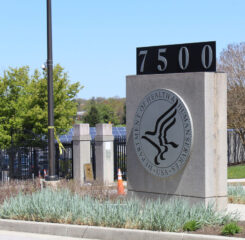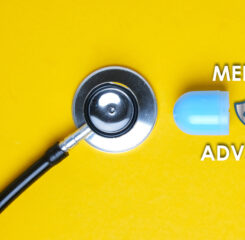For older adults, internet access, as well as digital literacy, is a must for a host of reasons, from accessing health services and shopping to maintaining connections with family and friends. For LeadingAge members who provide housing to low-income older adults, ensuring residents’ digital access requires addressing two critical issues: user education and training, plus funding.
One LeadingAge member, Columbus, OH-based National Church Residences, which operates 340 senior housing communities in 25 states, has worked to increase internet access in a way that offers a roadmap to others with similar goals.
The organization began its own work on digital access in 2020. Public Policy Manager Corri Page, in a LeadingAge-hosted meeting on internet access in affordable housing on June 6, described how the pandemic “shined the spotlight on the problem of seniors being isolated, due to COVID restrictions and not having digital access.” With the help of philanthropy, National Church Residences conducted a few pilots that offered residents digital devices and training in using them. But by 2022, Page said, the organization decided it needed “a better handle on how seniors are connected and what they use the internet for.”
Survey Residents on Internet Access and Use
National Church Residences began by establishing a baseline on use and needs. In spring 2022, it surveyed residents in affordable housing buildings that did not provide internet—i.e., where those who wanted Wi-Fi would have to pay for their own subscription. A second survey covered properties where building-wide Wi-Fi was provided as an amenity. Comparison of the results clearly shows how offering free Wi-Fi greatly increases uptake by residents:
- In the first survey, of buildings where residents had to pay for Wi-Fi, 50% of respondents had internet access, 39% had no access, and 11% had access through their phones.
- In buildings providing free Wi-Fi to residents, 83% of respondents reported having internet access, 11% reported no access (even though it was available to them), and 6% had access through phones.
“We found that it definitely moves the needle when we’re able to make the internet more affordable for the residents,” says Page. “What was more interesting to us is to find that whether we’re providing it or they’re paying for it, well over 55% [of residents] use it to check their medical records and 49% were using it for telehealth to meet with health care professionals.”
Page notes that 63% reported using the internet to connect with friends and family via Zoom or FaceTime. She is especially encouraged by the fact that a large majority of survey respondents with internet access agree somewhat or strongly that they worry less about their health and safety (67%); are less dependent on other people (74%); and feel happier—less isolated, lonely or depressed (82%).
Tapping a Pipeline of Federal Money and a Connection for Providers
Armed with insights into residents’ needs, the organization began to research funding sources. Through its connection with the Franklin County Digital Equity Coalition, a group of 30-plus government, education, health, social services, and other organizations committed to securing broadband access for Columbus-area residents, National Church Residences focused on enrolling residents in the federal Affordable Connectivity Program (ACP), which was funded by $14.2 billion from the $42.5 billion Infrastructure Investment and Jobs Act (IIJA), passed in 2021.
Enrollment events at 10 National Church Residences sites had 300 participants and resulted in 113 eligible low-income individuals enrolling in the ACP, which paid for discounted internet service and one-time discounts on laptops, desktop computers, or tablets.
National Church Residences included its benefits enrollment team in the process, to help residents use their new internet access to connect to benefits. The experience also led to development of a “Digital Connectivity Toolkit” on helping residents find affordable internet—for instance, the low-cost plans available from most internet service providers. Local partnerships with organizations who offer digital skills training have also allowed digital assistance to residents.
Although ACP funding dried up in early June, Page says National Church Residences is now preparing for future grant programs through the Digital Equity Act, also part of the IIJA, which uses $2.75 billion to promote digital inclusion and advance equity for underserved and low-income Americans. Every U.S. state, territory, and the District of Columbia has created its own Digital Equity Plan, and later this year, states will begin receiving money from the National Telecommunications and Information Administration (NTIA) to implement those plans.
Page suggests that other providers interested in boosting residents’ internet access start by contacting their state broadband office, such as her own state’s Broadband Ohio, tasked with distributing almost $800 million in federal money to expand internet access to Ohioans. “They are very responsive,” Page says. “They are usually small offices that want to hear from the community and want to hear from the people who are serving their core populations.”
Resources
More information on National Church Residences’ digital connectivity work and its use of grant funds is available on the organization’s website.
For more on the Digital Equity Act, read our bulletin about the recent LeadingAge-hosted meeting on internet access in affordable housing, with information about how providers can get involved with state broadband offices (see a directory here), and apply for Digital Equity Act funding. A recording and slide presentation from the meeting is also available.
Do you have a story to tell about how your organization innovates to better serve older adults? How do you offer new and needed services? How do you attract and retain direct-care professionals and reward staff for their irreplaceable work? The LeadingAge Story Collector, powered by Greystone, makes it easy to submit your story. Try it now.

 Shutdown Week Three: Impact of Ongoing Closure on Affordable Housing
Shutdown Week Three: Impact of Ongoing Closure on Affordable Housing CY 2026 Home Health Final Rule: Advocacy Leads to Much-Reduced Cut
CY 2026 Home Health Final Rule: Advocacy Leads to Much-Reduced Cut


